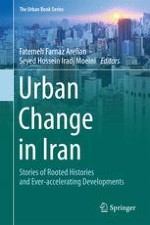2016 | OriginalPaper | Buchkapitel
14. Typo-Morphological Analysis of Housing Layout and Density in Tehran
verfasst von : Homeira Shayesteh, Philip Steadman
Erschienen in: Urban Change in Iran
Aktivieren Sie unsere intelligente Suche, um passende Fachinhalte oder Patente zu finden.
Wählen Sie Textabschnitte aus um mit Künstlicher Intelligenz passenden Patente zu finden. powered by
Markieren Sie Textabschnitte, um KI-gestützt weitere passende Inhalte zu finden. powered by
